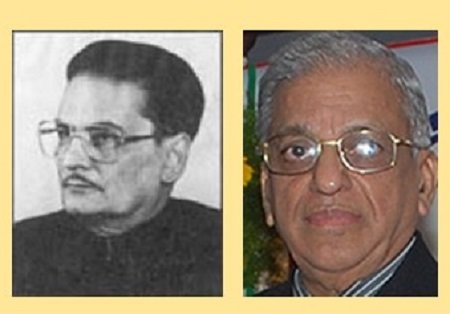Read in : தமிழ்
Justice PS Mishra and Justice Shivraj V Patil, the two judges in the Rajakannu case in the film Jai Bhim, have a legacy of standing up for justice and humanitarian intervention.
The film Jai Bhim dealt with the case of Rajakannu who was tortured and murdered by policemen at a police station in Cuddalore 28 years ago. The film graphically portrayed the life of a marginalized community similar to the one that Rajakannu came from and how after his death the police tried to cook up evidence to cover up their guilt. Suriya played lawyer K Chandru who took up the case. Chandru later became a judge in the Madras High Court.
Justice Prabha Shankar Mishra was born August 6, 1936 in Patna. After 22 years of practice as advocate, he was appointed judge in the Patna High Court in 1982. Known as a fearless crusader for justice, Justice Mishra was transferred and appointed judge in the Madras High Court in 1990. A few days before he was transferred, then chief minister of Bihar Laloo Prasad Yadav publicly said some judges will be transferred out of the state. Many lawyers there signed a petition against Justice Mishra’s transfer.
He and Justice Patil took up the Rajakannu habeas corpus case in 1994. Justice Chandru has said that when two people’s evidence was submitted in the court on the Rajakannu case, Justice Mishra said it was a clear case of murder after he read the submissions.
Transferred out of the Madras High Court in 1995, Justice Mishra became Chief Justice of Andhra High Court. When a woman wrote a letter to him saying that she was being severely tortured by her husband, he made the letter into a writ petition and heard the case without requiring that the woman be present in court. He ordered action against the husband.
Justice Mishra advocated judicial reforms. He undertook many reforms in the Andhra judiciary when he was chief justice there.
Justice Mishra was transferred to Kolkata High Court in 1997. During his tenure, three judges junior to him were selected and appointed as judges in the Supreme Court. He wrote to then chief justice M M Punchhi against this move but didn’t get a positive response. As a mark of protest, he resigned as Chief Justice and started practising as senior counsel in Supreme Court.
He appeared pro-bono in many cases representing common folk. Though he served as judge in four high courts, he never became judge in Supreme Court. When he died, the Supreme Court expressed its condolences and respect in a full court reference, in a sign of his standing in legal circles.
When he died, the Supreme Court expressed its condolences and respect in a full court reference, in a sign of his standing in legal circles
Born in 1940 in Maladkat in Karnataka, Shivaraj Patil started practicing law in 1962. In 1979, he started practicing in Bangalore High Court. In 1990, he was appointed judge in that court and was transferred and appointed as judge in Madras High Court in 1994. He served as Chief Justice for a brief period, too. He then took over as Chief Justice of Rajasthan High Court. Later, in 2000, he became judge in Supreme Court.
After retiring as Supreme Court judge in 2005, he headed the National Human Rights Commission. At that time, he ordered the payment of compensation of Rs 2.8 crore to tribals affected by Special Task Force actions in capturing Veerappan.
When he came to know of the plight of a child born with four legs and arms in Hararia, Bihar, he donated a sum of Rs 26 lakh through a trust he had set up.
Read in : தமிழ்











